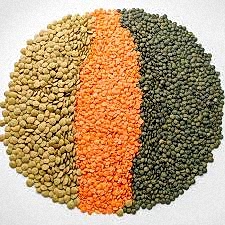Effect of storage containers and moisture levels on the seed quality of Lentil (Lens culinaris L.)
Keywords:
Storage containers, Moisture levels, Germination, Vigour index, Fungal infection, LentilAbstract
The effect of moisture levels and storage containers on the quality of lentil seed was investigated in the laboratory of Agronomy Department, Hajee Mohammad Danesh Science and Technology University (HSTU) Dinajpur, Bangladesh during March-April 2016. Three seed containers viz, sealed container, poly bag and gunny bag and three moisture levels i.e. 8.88 %, 12.23 % and 14.10 % were included in the study. Lentil seeds of 8.88% initial moisture level were found in the best condition in respect of germination, shoot and root length, vigour index and the least fungal incidence. The highest germination percent (85.39%), the longest shoot length (17.67 cm) and root length (8.77 cm), and the least fungal incidence (11.67%) were found in sealed container with 8.88% moisture level, while the lowest germination percent (55.99%), the shortest shoot length (11.60 cm) and root length (4.64 cm), and the highest fungal infection (28.00%) were found in the gunny bag of 14.10% moisture level. Among the three containers, sealed container was the best and the gunny bag was the worst storage containers for storage of lentil seed up to 45 days. It is concluded that minimum moisture level and air tight sealed storage container have the greatest benefit for storing seeds and maintaining quality seeds.References
Agrawal, R.L., 2003. Seed Technology. Oxford and IBH Publication Co. New Delhi, India, 395-397.
Baki, A.A., Anderson, J.D., 1973. Vigor determination in soybean by multiple criteria. Crop. Sci., 13, 630-633.
BARI (Bangladesh Agricultural Research Institute), 1998. Mungbean cultivation in Bangladesh. Bangladesh Agr. Res. Inst., Joydebpur, Gazipur. 11-16.
BBS (Bangladesh Bureau of Statistics), 2011. Statistical Year Book of Bangladesh. Bangladesh Bureau of Statistics, Min. Plan., Govt. Peoples Repub. Bangladesh, Dhaka. 96-97.
BBS (Bangladesh Bureau of Statistics), 2012. Yearbook of Agricultural Statistics of Bangladesh. Bangladesh Bureau of Stat., Stat. Div., Min. Plan., Govt. People’s Repub. Bangladesh. 87.
Branderburg, N.R., Simons, J.W., Smith, L.L., 1961. When and how seeds are dried. Seeds: The year book of agriculture. The United States Department of America, Washinton DC, USA. 295.
Ching, T.M., Taylor, H.L., Rowell, P.T., 1960. Change of forage seed quality under different simulated shipping conditions. Agron. J., 52, 37-40.
Christensen, C.M., 1970. Moisture content, moisture transfer and invasion of stored sorghum seeds by fungi. Phytopathol., 60, 280-243.
Copeland, L.O., 1967. Principles of seed science and technology. Burgess Pub. Com., Minnaeapolis, Minnesota, 164-165.
Delouche, J.C., Matthes, R.K., Dougherty, G.M., Boyd, A.H., 1973. Storage of seed in sub-tropical and tropical regions. Seed. Sci. Technol., 1, 671-700.
Delouche, J.E., 1968. Prospect of seed storage. Proc. l968. Short course seed man Miss. State Univ., Seed Technol. Laboratory, 85-119.
Dimitrive, D.G., 1973. Effect of growth condition on protein lentil. Field. Crop. Abst., 28(1), 33.
Gomez, K.A., Gomez, A.A., 1984. Statistical procedure of agricultural research. John Wiley and Sons. New York, USA. 200-215.
Harrington, J.F., 1972. Seed storage and longevity. In: Seed Biology. Kozlowskied, T.T. (ed.). Vol. 3.
ISTA (International Seed Testing Association), 1996. International rules of seed testing association. Seed. Sci. Technol., 27, 333.
Kaur, J., Randhawa, H.S., Sharma, H.L., 1990. Influence of moisture and container on viability of paddy seed during storage under ambient conditions of Punjab. Annals of Biology, Ludhiana, India. 129-134.
Khan, A.L., 1975. Seed health testing of sesame with special regard to Macrophomina phaseolina. A monograph submitted to the Danish Govt., Inst. of Seed Path. for Developing Countries. Copenhagen, Denmark. 27.
Mali, J.B., Joi, M.B., Shindh, P.A., 1983. Fungi associated with chilli seeds. J. Maha. Agr. Univ., 8, 69-71.
Mendoza, A.M., Molina, R.P., 1980. A study on seed-borne fungi associated with rice seed and their effects on rice seedlings. J. Araneta Res., 27(1-4), 50-69.
Mian, A.L., 1976. Grow more pulses to keep your pulse well. An assay of Bangladesh pulses. Dept. Agron., Bangladesh Agr. Univ., Mymensingh. 11-15.
Mian, I.H., Fakir, G.A., 1989. Fungi, moisture content and germinability of rough rice grains during storage. Seed. Res., 17, 169-173.
Purseglove, J.W., 1968. Tropical crops, Dicotyledones, Longmans, Green and Co. Ltd. 280.
Ramnath, M., Mathur, S.B., Neergaard, P., 1970. Seed-borne fungi of mungbean (Phaseolus aureus Roxb.) from India and their significance. Proc. Int. Seed Test Assoc., 35, 225-241.
Sutherland, J.R., 1981. Time, temperature and moisture effects on incidence of seed infected by Caloscy pathfulgens in sitka spruce cones. Can. J. Forest. Res., 11, 727-730.

Published
How to Cite
Issue
Section
Copyright (c) 2020 Kamrul Hasan, Ayman El Sabagh, Mohammad Sohidul Islam

This work is licensed under a Creative Commons Attribution-NonCommercial-NoDerivatives 4.0 International License.



